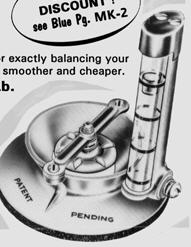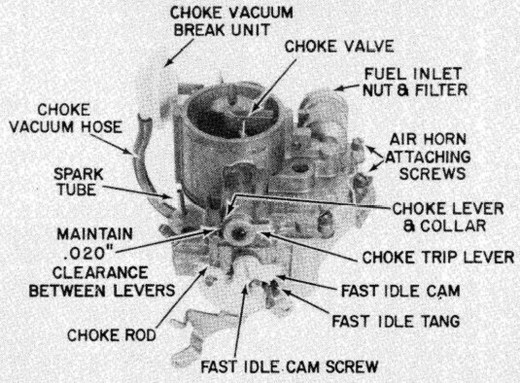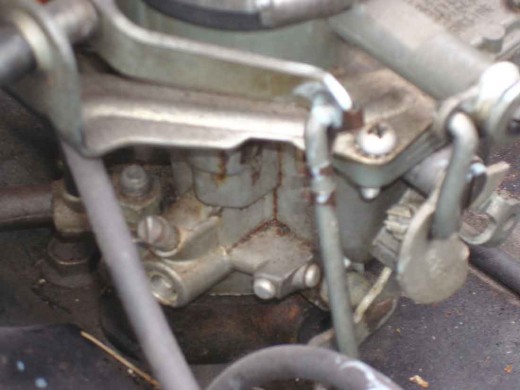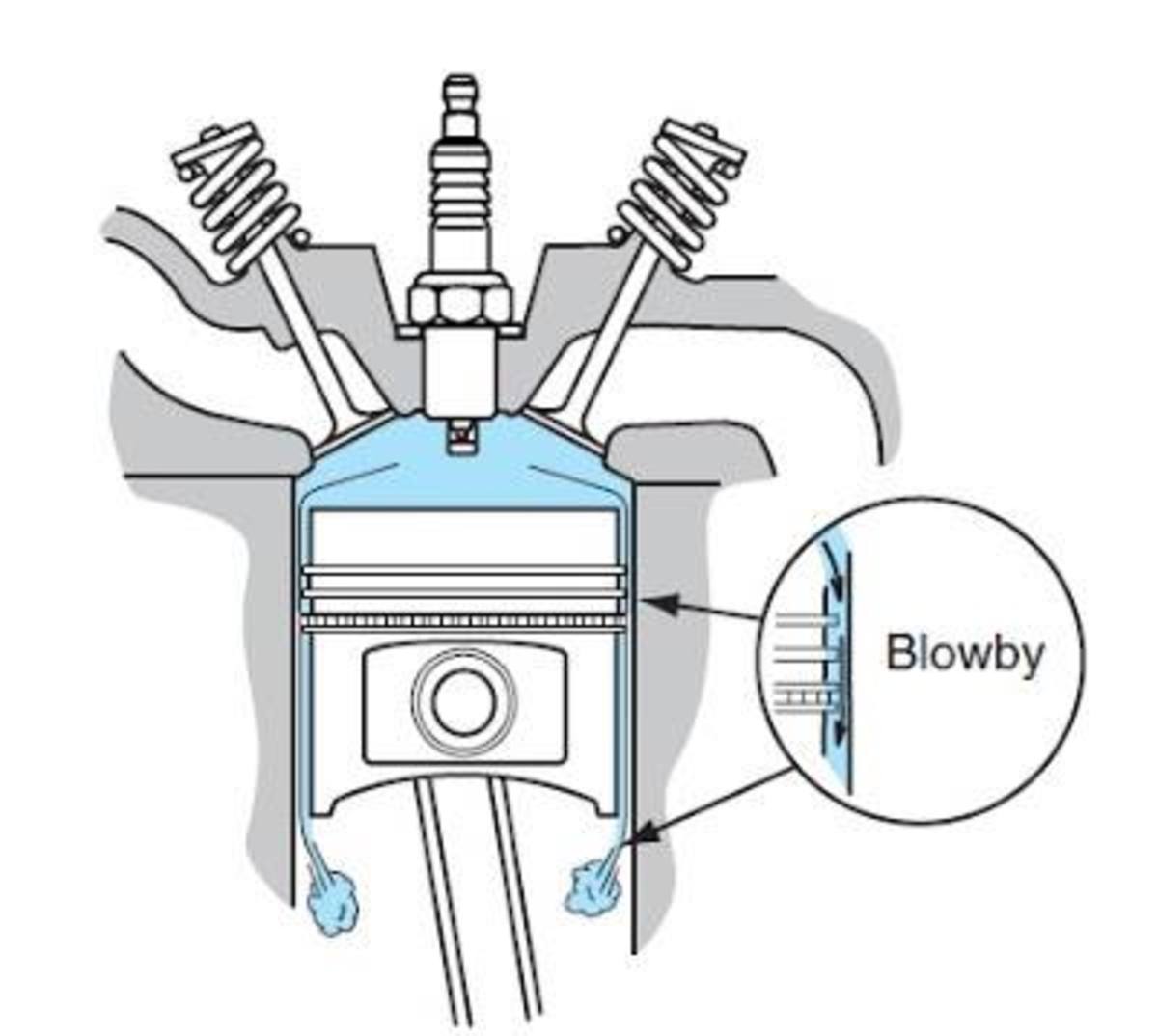How to Balance the Air Flow in CHevy Corvair Carburetors
Learning How
Corvair engines are air cooled like a VW, however Chevy designed with either a set of two carbs or four carbs. The engines with two carbs have either a 95 or 110 Hp, while the four carb engine has 140 Hp, which for a 2000 lb. car is more than enough power.
Most buyers of Corvairs have little idea or understand why the two or four carbs need to synchronized. They need to have similar air flow intake levels for the engine to run well. If it is running bad, you probably need to check the air flow suction each carb is at.
There are two basic methods. Method two is commonly used and requires a Unisync tool and sell for $30. It is not hard to find one online. These devices are placed onto of the carb when the air filter is removed. The center dial can be used to set the air intake.
There are several ways to adjust and synchronize your two carbs.
METHOD ONE
1. Disconnect the cross-shaft before starting the carb sync work.
2. Adjust the actuating rod to fit the cross-shaft .
3. Plug the Vacuum at the distributor
4. Set the carbs per shop manual (screw in the Mixture screw all the way in , then counterclockwise 1.5-2 turns out. Turn in the Idle speed screw until it touches the lever, then, turn in clockwise two turns).
5. Adjust each carb Idle speed screw equally until reaching the desired rpm (600).
6. Place the Unisync on left carb and adjust the center dial on the unisync until the float is in the middle.
7. Go to the right carb and do the same as in #6 and make necessary adjustments with the Idle Speed screw, if necessary.
8. Adjust the mixture screw (right carb) in or out until float stops rising any higher and then do the same to the left carb.
9. Redo your Idle Speed screws on each carb to get them both back to the middle and check your RPMs.
METHOD TWO (Preferred)
1.Disconnect all linkage to carb throttle shaft. Note: If this is not the first time you have done this, disconnecting the linkage at the left carb may not be necessary. I have done the procedure without this step.
2. Set MIXTURE screws out 1.5 turns. Set Idle Speed screws per Step 4, Method One.
Start engine, warm for 15 min, idle is steady.
3. Balance carbs left to right with IDLE SPEED screws only.
4. Place Unisync on top of left carb, make sure the bottom seats so there is no vacuum. Use the rubber air filter gaskets on top of the carb rim, then place the Unisync on top for a good seal.
5. Try for the middle line on the Unisync, if not possible, try for the lowest line.
Remember, try to get the strongest airflow. The ability depends on the car and your carb’s condition.
Use the dial on the Unisync to raise or lower the ball. Once a setting is secure, go to the right carb. Note where the ball is, if not at the same line setting, adjust it and use the Idle Speed screw on the carburetor to raise or lower ball. If you are unable to reach the same setting, go back to the left carb and use the dial on the Unisync to readjust to a different line, usually this is lower. Return to the right carb, use the Idle Speed screw to adjust it to that level. Once both carbs are same level, recheck left and right again. If you need to readjust again, repeat again.
Adjust linkage so it slides right in the hole located behind the left carb.
6. Now that the Idle Speed screws are set and RPMs are generally 550-700, the mixture screws are now adjusted to smooth the idle further (little engine vibration, a good indicator is the Coil. It should not be vibrating much and should be close to the same turns out when done.
The Mixture screw was set at the start of the procedure to the Corvair’s starting point, a bit on the lean side. You may need to richen this.Turning the screw clockwise creates a leaner, less fuel, mix. Counterclockwise, a richer, more gas, mix.
To set mixture, turn screw IN clockwise slowly until RPMs drop slightly, now back out counterclockwise SLOWLY until max RPMs are reached and no farther, now turn SLOWLY back in enough to drop RPMS by about 20, usually about 1/8-/ 1/4 in. Remember, clockwise is LEANer, counterclockwise, RICHer. Once mixture is set on left carb, the identical procedure is completed on the right carb.
If you have a automatic transmission, place in gear. If you have balanced carbs and the idle is correct, there will be very little difference between neutral and drive gears, the car will not lunge forward and it will barely move at all. You will be able to idle in drive for 3 minutes or more without stalling. If your car does not, you need to keep tinkering with the adjustment for the idle RPMs. Automatic idle should be between 500-600 RPM while in Drive and not more than 600-700RPM in Neutral. Generally, the RPM difference between D and N should be the least as possible. This may be difficult to achieve for some cars.
If you have 3 or 4-speed, the RPM setting while idling should be not more than 800 RPM max. The optimum is around 650-700 RPM. Idling at 800 RPM is OK, just wastes more gas. Some cars depending on their condition, refuse to idle too low. For example, my 65 auto, idles at 550 in D and 600 in N. The 67 stick idles at 750-800. They run fine.
When balancing carburetor air flow, you are adjusting airflow. Nothing else. When adjusting idle mixture, you are only adjusting idle mixture- nothing else.
You cannot harm an engine with an excessive lean idle mixture(less gas) but it won't run good. On the other hand, a too rich mixture (excessive gas) can cause foiled, sooty plugs and may stall the engine. To recap, you want the best carb fuel mix for the idle speed setting you are at. It is a difficult thing to learn. The carb mixture screw smooths out a rough idle. As soon as you press on the accelerator, you are no longer using the Idle settings.
As soon as you throttle and accelerate, you are no longer dealing with idle fuel mixture issues. Adjusting the idle mixture does not affect the car when driving only when stopped and idling.



Book on how to restore a corvair
- Corvair for the Not So Mechanically Inclined by Perry Moore (Book) in Crafts & Hobbies
Corvair for the Not So Mechanically Inclined by Perry Moore (Book) in Crafts & Hobbies : A Corvair for Dummies book! If you are under 40, odds are you have never heard or seen a Corvair! Learn how to repair the most common restoration issues for - Designer Blog



